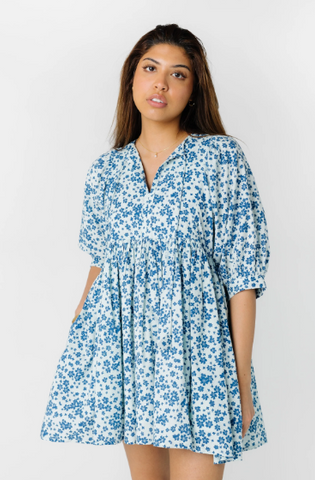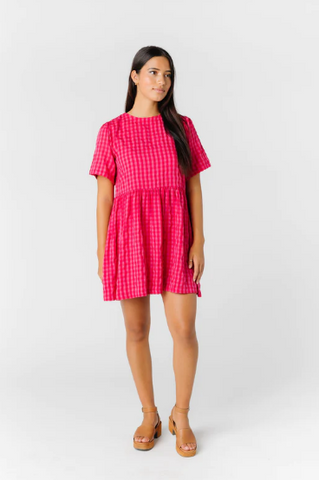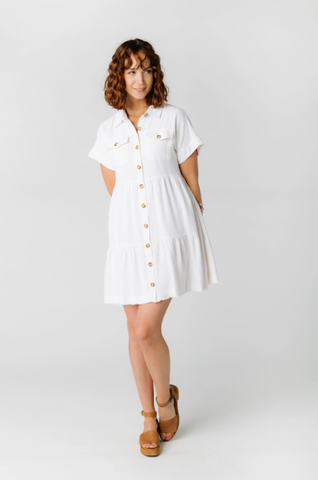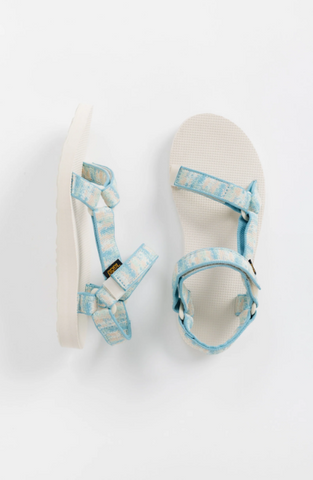How do you approach clothing care? Chances are you likely either learned from parental figures or clothing care labels, perhaps a one-off search query when you’re taking care of something special or a new fabric. Or, maybe you’re a dry clean only, leave it to the professional type of person!
Whatever your laundry habits are now, we hope this summer clothing care guide can help you keep your favorite pieces in pristine condition for seasons to come. After all, laundry is one of those enigmas that takes effort and education to truly master.
From brights to linens to swimsuits and accessories, we’re going to share our best tips and tricks that teach how to wash clothes without shrinking and more with all your summer staples in mind.
Clothing Care Quick Tips (Washing and Drying 101)
It’s important to get to know your tools if you want to give your clothes the TLC they deserve. While washers and dryers add more bells and whistles, we’re taking it back to basics.
To start, sort your clothes into loads by color and fabric type. If you aren’t sure, refer to the clothing care labels as you sort. Next let’s talk about the washing cycle and its three components: temperature, soil, and spin.
Hot Water:

According to The Spruce, hot water is best for whites and household linens. Hot water tends to make some fabrics shrink, wrinkle, and fade. The dyed fabric might turn out splotchy after using hot water. And delicate fabrics don't usually respond well to high temperatures.
Warm Water:

Most clothing, regardless of color or fabric, can be washed in warm water. “Warm” simply means a split between hot and cold water and the proportion varies by the washer. The Spruce suggests warm water is the best for permanent press materials and jeans. It allows good cleaning action without as much fading, wrinkling, and shrinking.
Cold Water:

Cold water is for delicates, denim, and deep or vivid colors that might be prone to running or fading. Keep a keen eye on your soil levels because cold water clothes can require closer care for a complete clean.
Soil Levels:
The soil setting on a washing machine is straightforward. It refers to the overall dirtiness of the load. Your selection will adjust the wash time as well as the detergent usage in some models. For clothes with average wear between cycles, the normal setting will do and you can adjust accordingly.
Spin:
The spin cycle is also fairly straightforward: A higher spin speed reduces the amount of water your clothes will retain, meaning they will take less time to dry. Lower spin speeds result in less wrinkling, tangling, and damage to the fabric, making it perfect for delicates.
Drying:
The second part of learning how to wash clothes without shrinking is knowing how to properly dry them. Overdrying or using a heat higher than the article requires are the two fastest ways to cause a garment to shrink.
Air drying is easier on fabrics, eliminates static, doesn’t lock in stains, and, according to USA Today, is the way to avoid shrinking clothes. Be mindful of humidity and sunlight regardless of if you air dry your clothes indoors or out to manage fading and aroma.
Using a dryer is quick, reliable, and effective. Dryers can prevent wrinkles and are easy on an active lifestyle since you just have to toss a load in, start the cycle, and fold it upon completion.
Summer Clothing Care How-Tos
Now, let’s take what we just learned and apply it to some summer staples.
How to Wash Linen Clothes

Check your linen clothing’s care tag and make sure it doesn’t say hand wash or dry clean only before continuing. Now, avoid washing them in water that’s too hot or too cold. Warm or cool cycles are likely your best bet, always with gentle detergent and on a delicate or gentle cycle. Air, line, or tumble dry on low. This finicky fabric is one you should take care to use low temperatures with because using too high of a heat setting will cause damage or shrinking.
How to Wash A Swimsuit

Use cold-to-room-temperature water and mild detergent to wash your favorite swims. We’d recommend turning them inside out before washing, but the delicate cycle on a machine or handwashing them in the sink will work just fine. After, wring out the water and hang or lay the swimsuit flat to dry.
How to Wash Hats

Handwashing hats is advisable, but they can be put in a washing machine in cold water on a delicate or gentle cycle if you’re in a pinch. The key here is to pretreat areas that contact your skin, allow the hat to soak, thoroughly rinse, then reshape the hat and let it air dry. If you wear a hat regularly, you should wash it regularly to get rid of any stains or smells.
Think of it this way: if you use a hat to cover unwashed and dirty hair, it will accumulate dirt, sweat, and grime sooner rather than later and deserves the same attention that you give your hair. Otherwise, things will get all sorts of gross!
How to Wash Sandals

Gently scrub your sandals with a soft toothbrush with a solution of mild laundry detergent or dish soap and water. Then, let your sandals soak in the laundry soap water solution, rinse them, and let them air dry. If you really need to use a machine for speed, use the delicate setting with cold water and just a touch of detergent and add one cup of white vinegar directly into the machine.
If you want to prevent unwanted smells, add a layer of baking soda to the sole and let them sit for a few hours. We tend to leave them outside or in the garage while the baking soda does its thing, but anywhere out of the way will do.
Keep Your Called to Surf Summer Clothes in Tip-Top Shape

There’s nothing worse than having to replace an old favorite when it unravels, shrinks, stains, or just gets ruined, especially when it could’ve been prevented by proper clothing care and laundry habits. So, whether your favorite pieces in your closet are old or new, start giving them the TLC they deserve with these tips. And if you’re looking for a wardrobe refresh, start your search at Called to Surf.



